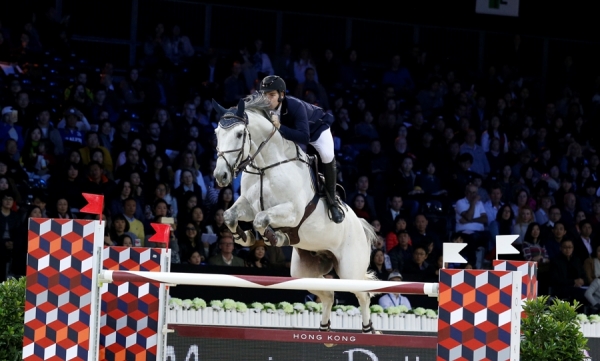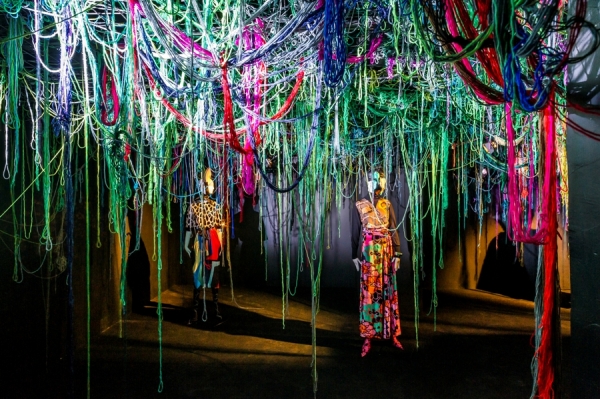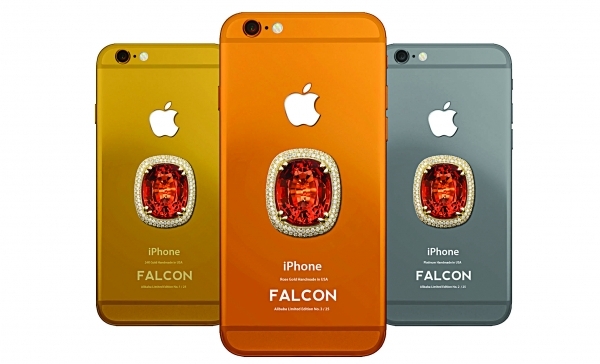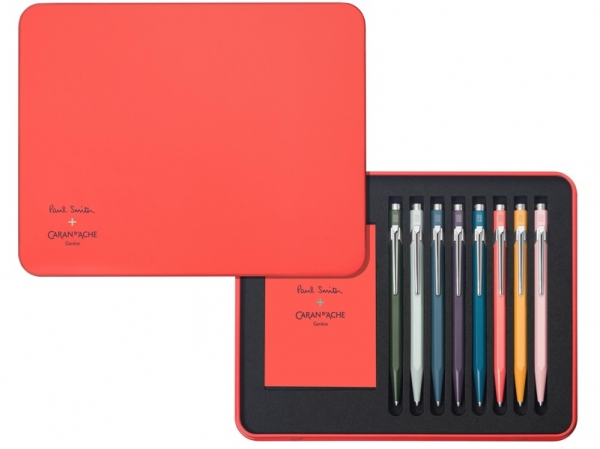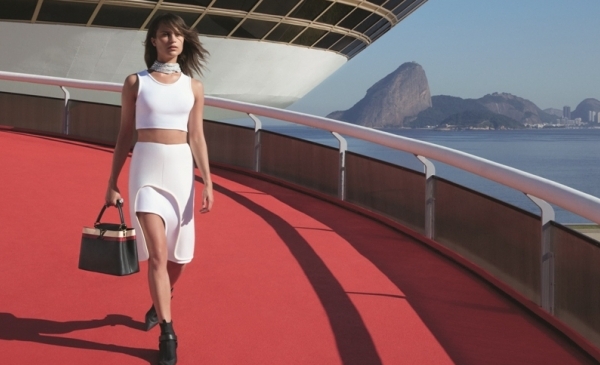
The Rio Olympics saw many sporting superstars enhance their already brilliant reputations. There was Usain Bolt – the sprinter supreme – in the athletics stadium, for example, while Katie Ledecky – the teenage swimming sensation – made an equally big splash in the pool. For one of China’s golden greats, though, winning in Brazil not only confirmed his position at the very top of his sport, it also marked the moment when he moved from being a phenomenon to becoming a genuine sporting legend.
Ma Long’s four-set demolition of Zhang Jike, his compatriot, in the men’s table tennis Olympic final saw him become just the fifth man in the history of the sport to complete the fabled grand slam – the triple crown of world championship, world cup and Olympic titles. He also became only the second to hold all three at the same time.
Not only that, he’s also the first man ever to hold all of these titles simultaneously, while also being the reigning champion in the International Table Tennis Federation’s (ITTF) World Tour. This is not to mention the fact that he’s the first to have won every major singles title he’s eligible to win, from national championships to regional tournaments to the majors. In short, it’s fair to say that he has come to utterly dominate the sport.

This month, fresh from his Rio triumph, he will attempt to retain his ITTF World Cup title, taking on 15 of the top players from around the globe in the German city of Saarbrucken. It’s a competition he’s won twice before, most recently in 2015 when his astounding attacking play defeated Fan Zhendong, his national team-mate, in the final.
That victory in Sweden marked the climax of a truly glorious year for Ma, a 12-month period that saw him claim six major titles and lose just once in an international competition. Coupled with his Olympic success this July, it’s clear he is at the summit of a glittering table tennis career.
The career, however, might never have even materialised had it not been for the determination of his parents. Ma is the first to admit that, as a child, he had no particular fondness for table tennis. He says: “I started playing at 4 or 5 years old. It wasn’t really because I loved the sport, though, but more because it was something new to me. I think, at the very beginning when I started playing, it was more because of the influence of my parents. They took me to practice every day.
“My parents wanted me to play to improve my health and fitness. As an indoor sport, table tennis has a high level of technical requirements, making it extremely suitable for Asians to play. In the beginning, it was more about playing to see if the sport was for me. It was only after playing for a few years – when I was about 8 or 9 years old – that I started to get a real liking for it. It was then that I found I truly had a love for the sport.”
That love was further nurtured by watching some of the great names of Chinese table tennis achieving glory on the international stage. Ma says: “What really inspired me to become a professional player was seeing how the national team players – such as Liu Guoliang and Kong Linghui (Olympic gold medal winners in 1996 and 2000 respectively) – were fighting for the honour of our country. It made me look up to them and to want to earn honour for China. I always admired their style. As a child, I idolised them.”
At the age of 13, Ma’s potential became clear and he was brought to Beijing for advanced training. Two years later, he had progressed to such an extent that he graduated to the Chinese national squad. It was here that he came under the wing of one of his heroes – Liu Guoliang, then the national team’s head coach.
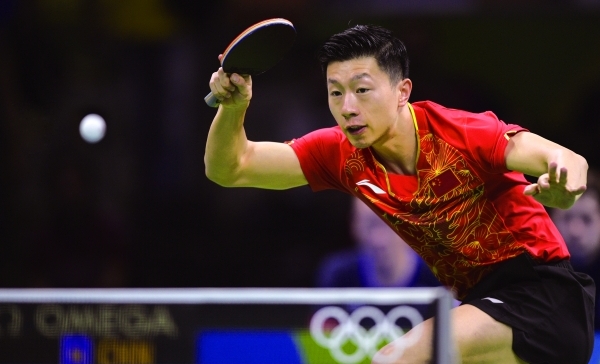
Ma maintains that support given to him at this stage was crucial, saying: “A lot of people have helped me at different stages of my table tennis life and career. One of the most important phases, though, was when I first joined the national team.
“I owe so much to my coaches – Qin Zhijian, who started coaching me in 2006, and Xiao Zhan, who coached me when I first joined the second team. Then, of course, there is Liu Guoliang, who encouraged and nurtured me throughout my time with the national team.”
Within a year of joining the squad, he’d won his first major titles – the Asian and World Junior championships. By the age of 18, he’d won his first world senior title while competing in the ITTF Team World Championships. After that, he progressed so quickly that by 2009 he was ranked number two in the world, having won eight ITTF world tour tournaments, two Asia Cups, and reached the semi-finals of that year’s world championships.
It was at this semi-final in Yokohama, however, that doubts about Ma’s ability to reach the very top of the sport began to surface. Beaten by the then number one, Wang Hao, this defeat was to mark the start of a run of three successive losses to the same man at the same stage of this prestigious tournament.
Ma admits that his inability to overcome his rival at this level became somewhat frustrating, saying: “I was in different situations for the three world championships. In 2009, there was certainly a gap in terms of technique and skills between me and Wang Hao, so it felt normal losing to him.
“In 2011 in Rotterdam, I felt there was a real chance to beat him, but I failed to deal with one or two crucial points and eventually lost. That was a real disappointment. In 2013 in Paris, I definitely had the advantage, but didn’t play my best against him in the semi-final match.”
Matters weren’t helped when Liu Guoliang publicly commented that, although Ma had all the tools to reach the top of the sport, he lacked the mental toughness needed to play to his full ability in major tournaments. Seemingly bearing out Liu’s analysis, Ma missed out on a spot in the men’s singles for the London Olympics, after a couple of shock defeats had seen him fall down the ITTF rankings in the run-up to the Games.
The disappointment of London, however, only inspired Ma to greater heights. He won the World Cup, his first Grand Slam tournament, later that year. A year later, he took the Asian Championships and was named the best player at the world team championships in 2014. In March the following year, he reached number one in the rankings, a position from which he is yet to be dislodged.
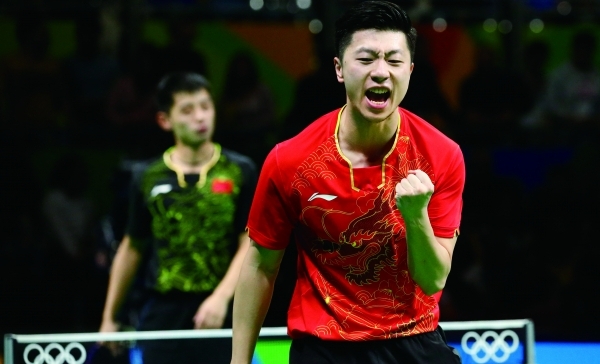
In 2015, he finally ended his world championship hoodoo, possibly helped by the absence of his nemesis, Wang Hao. He hardly dropped a set throughout the tournament, before overwhelming the up-and-coming Fang Bo in six sets in the final.
Freely admitting he was relieved to have finally clinched the title, he says: “I was very happy to win my first world championship title after losing to Wang Hao three consecutive times in the semi-finals. That put me under a lot of pressure this time to win the title – especially during the semi-final stage.”
Since then, Ma has reigned supreme at the table and achieved true Olympic glory. It’s clear that winning in Rio was especially important to him after the disappointment of 2012. He says: “I am very glad to have completed the grand slam and to have become Olympic champion. I didn’t stress too much during the final. I did my best and I’m extremely happy that I took the gold medal. It was a very special moment in my career.”
The two golds he picked up in Rio – he also helped China to victory in the team event – added yet more lustre to his long list of honours and achievements. What is it, though, that has made him quite so dominant? Tom Lodziak, one of the world’s leading table tennis coaches, believes it is because he doesn’t appear to have any weakness in his game.
He says: “Ma Long’s always had an exceptional forehand. His topspins are fast and powerful and he can place the ball anywhere on the table with phenomenal consistency. It’s not all about his forehand, though. He has made big improvements to his backhand over the years. In the past, opponents would go after his backhand, but this is far less effective now, as he seems to be equally as strong on both sides.
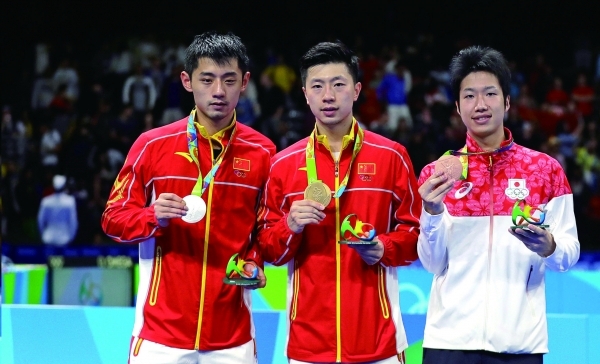
“There is also more variety to his play. It’s not all about the power, although this is clearly his major strength. He is very clever in how he uses pushes and blocks to keep his opponents off balance. When he’s in the mood – usually when he has a comfortable lead – he’ll throw in the occasional chop-block to really mess up his opponent.
“His physical conditioning is exceptional. It has to be to be able to play such a fast, powerful topspin game. Ma Long, and the other top Chinese players, have taken table tennis athleticism to a new level. I really enjoy watching him play. Even though his matches are often one-sided, I get pleasure from watching a master at work. He can make other professional players look like mere amateurs.
“I think now he has a strong claim to be the best of all time. Of course there are other contenders and it’s very difficult to compare players from different eras. Techniques have evolved. Tactics have evolved. Equipment has evolved. The rules have evolved.
“Sweden’s Jan-Ove Waldner is considered by many to be the greatest. He played with style and intelligence and could do things with the ball which seemed impossible. He won an Olympic gold and silver medal and two World Championship singles titles, so Ma Long has a little catching up to do.
“I’m not sure Waldner at his best would have been able to live with Ma Long at his best, though. Ma Long’s extra speed, spin and power would have overwhelmed Waldner’s slightly slower, more graceful game.”
It’s a reasonable conclusion to reach. Ma Long certainly overwhelms most modern-day players, something that was clearly evident in his crushing defeat of Zhang Jike in the Olympic final in July.
Zhang is a year older than Ma and was the last player before Ma to achieve the grand slam, with many once considering him the superior player of the two. During the final, he managed to keep the first set close before scoring a paltry 13 points in the next three. The worry for Ma’s opponents at this month’s World Cup is that they’ll be on the receiving end of a similar trouncing.



